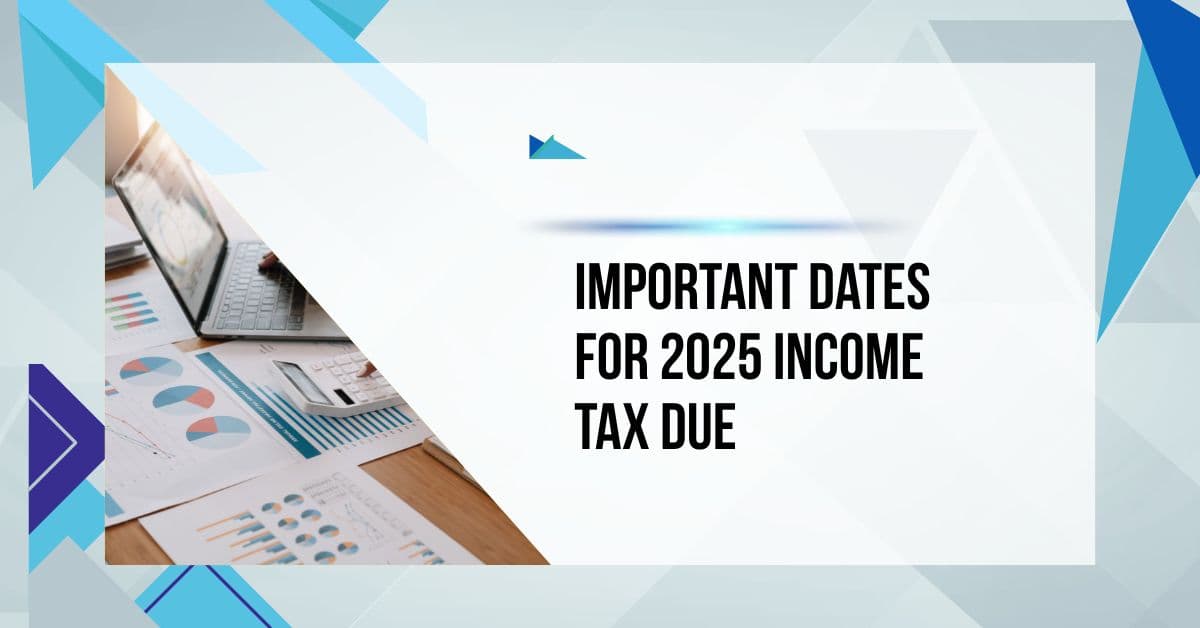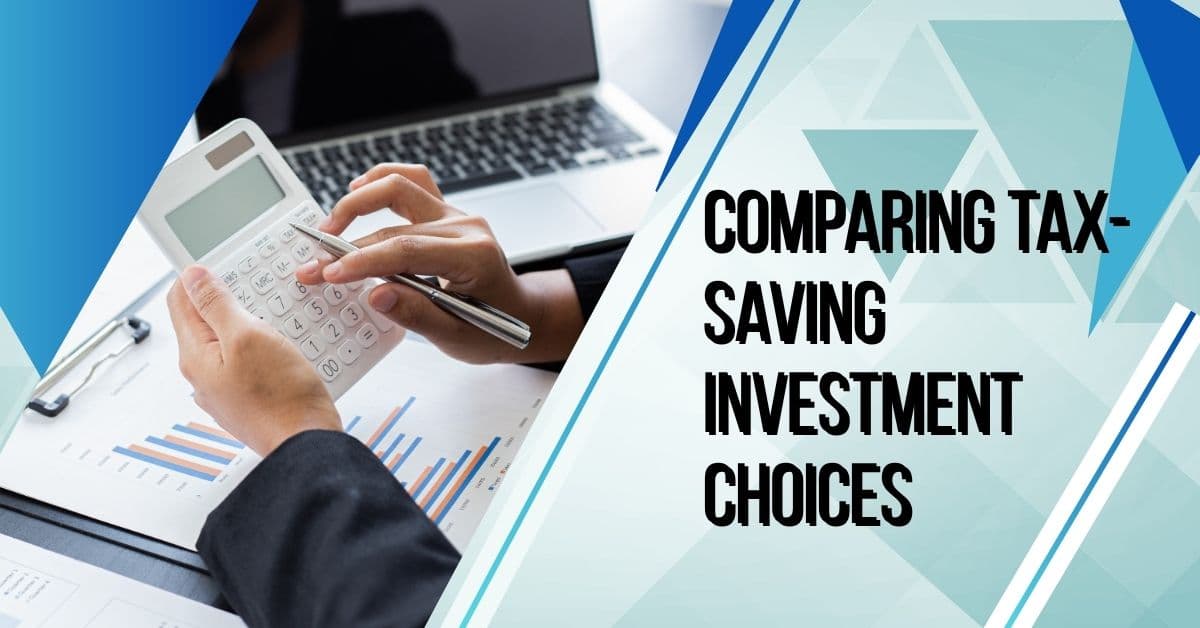Income Tax Due Date Alert: First-time taxpayers in India have a fantastic chance to reduce their taxes and accumulate money as the income tax filing deadline for the fiscal year 2024–2025 draws near. Individuals must file their Income Tax Returns (ITR) by July 31, 2025, and those who need an audit must do so by October 31, 2025. You can lower your taxable income and safeguard your financial future by making tax-saving investments under Sections 80C, 80D, and others. This article provides easy-to-follow investing tips to optimise tax savings and guarantee compliance prior to the 2025 deadlines. These pointers will help you handle tax season like an expert, regardless of whether you work as a freelancer, small company owner, or salaried professional.
Important Dates for 2025 Income Tax Due
It’s essential to remember tax dates in order to prevent fines and interest. The following dates are crucial for the fiscal year 2024–2025:

- The first advance tax instalment for people whose tax amount exceeds ₹10,000 is due on June 15, 2025.
- The deadline for filing an ITR for individuals, HUFs, and companies that do not need an audit is July 31, 2025.
- The second advance tax instalment is due on September 15, 2025.
- The ITR filing deadline for companies or individuals in need of an audit is October 31, 2025.
December 15, 2025: The third advance tax instalment. - March 15, 2026: The last advance tax payment.
- The deadline for tax-saving investments for FY 2024–2025 is March 31, 2026.
Note: If these dates are missed, there may be interest under Sections 234A, 234B, and 234C or penalties under Section 234F (up to ₹5,000 for late ITR filing).
Why First-Time Investors Should Consider Tax-Saving Investments
Tax-saving investments serve two purposes for first-time taxpayers: they lower your taxable income and aid in the gradual accumulation of wealth. Deductions under Sections 80C, 80D, and others can drastically reduce your tax bill under the previous tax system. For instance, investments like as ELSS, PPF, and NSC are eligible for deductions of up to ₹1.5 lakh under Section 80C. Early preparation helps you make well-informed decisions that support your financial objectives and prevent stress at the last minute. Here’s why it’s imperative to act immediately:
- Make the most of your deductions: By saving up to ₹1.5 lakh under Section 80C and more under Sections 80D, 80G, and so on.
- Create Wealth: Long-term security or market-linked returns are provided by investments such as ELSS and NPS.
- Avoid Penalties: Interest and penalties are avoided by timely investments and ITR reporting.
- Financial Discipline: Establishing a routine of saving and investing early on encourages this behaviour.
Important Investment Tips for New Taxpayers
The following practical, novice-friendly investing tips will help you maximise tax savings and be ready for the 2025 tax season:

1. Use Section 80C to Receive Up to ₹1.5 Lakh in Tax Benefits
Up to ₹1.5 lakh can be deducted from a variety of investments and expenses under Section 80C. Popular choices include of:
- Equity-Linked Savings Scheme (ELSS): 3-year lock-in mutual funds that yield average returns of 12–15%. Perfect for young investors looking to expand.
- The Public Provident Fund (PPF) is a secure, government-backed plan that offers 7–8% yearly returns and is tax-free when it matures. It has a 15-year lock-in period.
- Certificate of National Savings (NSC): a five-year fixed-income plan that promises returns of about 7%.
- Fixed Deposits That Save You Taxes: For investors who are risk cautious, 5-year bank FDs with interest rates between 6 and 7% are appropriate.
- Life Insurance Premiums: Term insurance and ULIP premiums are deductible.
Hack: To diversify investments and lower risk, begin an ELSS fund Systematic Investment Plan (SIP) for as little as ₹500 per month.
2. Examine Health Insurance Section 80D
- Deduct up to ₹25,000 (₹50,000 for senior people) from your spouse’s, parents’, kids’, or yourself health insurance premiums. This guarantees financial security against medical crises in addition to tax savings.
- Hack: To maximise deductions, choose a family floater plan that covers several family members under a single policy.
3. For further savings, invest in the National Pension System (NPS)
- In addition to the ₹1.5 lakh deduction under Section 80C, NPS provides an extra ₹50,000 deduction under Section 80CCD(1B). It is a retirement-focused plan that combines government, debt, and equity assets with market-linked returns.
- Hack: If you’re young and have a lengthy investing horizon, use the active choice option in NPS to allocate more to stocks for greater returns.
4. Claim Benefits of Home Loans
- Deduct up to ₹1.5 lakh for principle payments under Section 80C and up to ₹2 lakh for interest under Section 24(b) if you have a house loan. Section 80EE or 80EEA offers a further ₹50,000 discount for affordable housing loans to first-time homeowners.
- Trick: To claim deductions in FY 2024–2025, apply for a loan before March 31, 2025, if you intend to purchase a property.
5. Use Digital Platforms to Start Small
- Beginners may easily invest in ELSS, mutual funds, or NPS with the use of digital platforms like Zerodha, Groww, or Paytm Money. Many offer deposits as little as ₹100 to ₹500, making them perfect for beginners on a tight budget.
- Hack: To maintain discipline, use applications to manage your investing portfolio and create reminders for SIPs.
6. Steer clear of last-minute purchases
- Making bad decisions might result from rushing to invest before the March 31, 2025, deadline. Investigate and choose solutions early on that fit your objectives and risk tolerance.
- Hack: To lessen financial hardship, stretch out your ₹1.5 lakh Section 80C limit over the course of the year by creating a monthly investment plan.
7. Recognise the Old and New Tax Regimes
- The new tax system offers reduced tax rates but no deductions, whereas the previous one permitted deductions under Sections 80C, 80D, etc. If your deductions surpass ₹2.5 lakh, the previous system is frequently more advantageous for newcomers.
- Hack: Compare the two regimes using an online tax calculator, then select the one that saves you the most.
Comparing Tax-Saving Investment Choices
To assist you in making your decision, below is a comparison of well-liked Section 80C tax-saving investments:

1. The ELSS, or Equity-Linked Savings Scheme
Three years is the shortest lock-in period among 80C choices.
- Returns: 12–15% (depending on the market)
- High risk
- Ideal For: Growth-oriented young investors
Tax Treatment: Section 80C applies to investments up to ₹1.5 lakh; returns including profits over ₹1 lakh are subject to 10% Long-Term Capital profits (LTCG) tax.
2. 15-year lock-in period for the Public Provident Fund (PPF)
- Returns: 7.1% (supported by the government)
- Minimal Risk
- Ideal For: Long-term savers who are risk averse
Contributions, interest generated, and the maturity amount are all tax-free under the Exempt-Exempt-Exempt (EEE) tax treatment.
3. Lock-in Period for National Savings Certificate (NSC): 5 years
- Returns: 7.7% returns (fixed)
- Minimal Risk
- Ideal For: Investors Who Are Conservative
Tax Treatment: Although interest earned is taxable, Section 80C allows for a deduction because it is reinvested.
4. 5-year lock-in period for tax-saving fixed deposits (FDs)
- Returns: 6–7%
- Minimal Risk
- Ideal For: Secure, fixed-income individuals
Tax Treatment: The investor’s income tax bracket determines how much interest is taxed.
5. Lock-in Period for the National Pension System (NPS): Up to age 60
- Returns: 8–12% (depending on the market)
- Moderate risk
- Ideal For: Those who prepare for retirement
Tax Treatment: 60% of the corpus is tax-free at maturity, with the remaining 40% utilised to buy an annuity. Investments up to ₹1.5 lakh under Section 80C and an additional ₹50,000 under Section 80CCD(1B) are deductible.
Your financial objectives, risk tolerance, and investment horizon all play a role in choosing the best tax-saving option. PPF and NSC give steady returns with lengthier lock-in periods, whilst ELSS offers strong returns with a shorter lock-in but at a higher risk. NPS is designed for moderately risky long-term retirement planning with extra tax advantages.
A Comprehensive Action Plan for Beginners
To get ready for the 2025 tax season, follow to this plan:
- Evaluate Your Income: Determine your taxable income, which may include profits from a business, freelancing work, or a salary.
- Deductions from the List: Determine whether investments and costs (such as rent or insurance payments) qualify under Sections 80C, 80D, etc.
- Select Investments: Depending on your objectives, divide your ₹1.5 lakh Section 80C limit across ELSS, PPF, or NPS.
- Get SIPs Started Early: To spread expenses and reduce market risks, start making monthly investments in mutual funds or ELSS.
- On-time ITR filing: File by July 31, 2025, or October 31, 2025, if an audit is necessary, using the Income Tax e-filing system or by speaking with a certified public accountant.
- Keep track of deadlines: To prevent fines, set reminders for deadlines for investments and advance tax payments.
Frequently Asked Questions (FAQs)
When is the deadline for FY 2024–2025 ITR filing?
For individuals and HUFs that do not need an audit, the deadline is July 31, 2025; for those who must, it is October 31, 2025.
How much does Section 80C allow me to save?
Deductions of up to ₹1.5 lakh are available for investments like as ELSS, PPF, NSC, and life insurance premiums.
Does the new tax system benefit new taxpayers?
If your deductions surpass ₹2.5 lakh, the previous system is frequently preferable. Make a comparison between the two regimes using a tax calculator.
Once March 31, 2025, has passed, can I still invest in ELSS?
To be eligible for deductions in the same fiscal year, investments for FY 2024–2025 must be made before March 31, 2025.
What occurs if I fail to file my ITR before the deadline?
For late submission, you might be subject to interest under Section 234A and a penalty of up to ₹5,000 under Section 234F.
Conclusion
For first-time taxpayers, the 2025 income tax season is a crucial year for prudent saving and asset accumulation. Utilising tax-saving assets such as health insurance, PPF, NPS, and ELSS can help you lower your tax obligation while safeguarding your financial future. Start early, pick assets that fit your objectives, and pay attention to due dates, such as the July 31, 2025, ITR reporting deadline. By using these essential tips, you’ll be able to handle tax season with assurance and lay the groundwork for future financial success. Don’t let the tax deadlines surprise you; take action immediately!
Disclaimer: This post is just for informative purposes and does not provide financial or tax advice. For individualised advice, speak with a qualified tax expert or financial planner.
Prostarm Info Systems Limited: Your First Step to Smart Investing!
Aditya Birla Fashion Shares – Buy or Wait?
22 Carat Gold Rate Graph: Understand Trends Before You Invest
